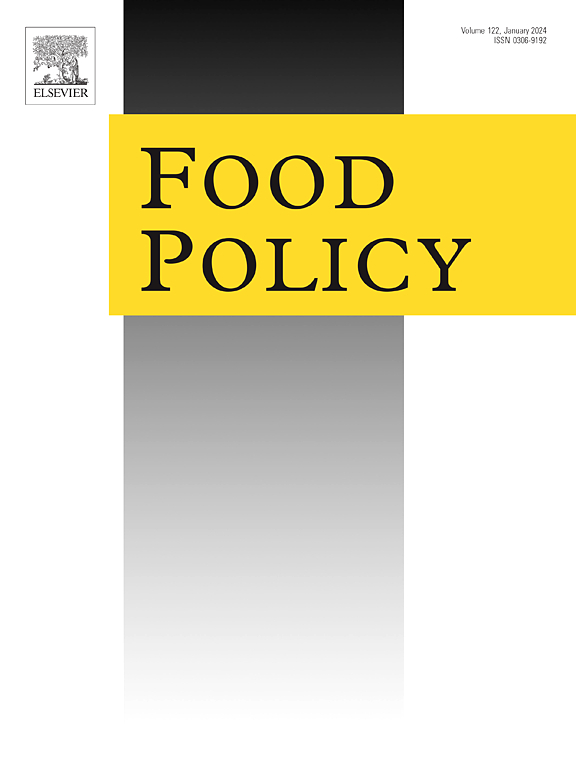在肯尼亚内罗毕,消费者对混合小麦粉食品的接受程度
IF 6
1区 经济学
Q1 AGRICULTURAL ECONOMICS & POLICY
引用次数: 0
摘要
非洲各国政府都对小麦粉混合表现出热情,以减少粮食安全风险,并拉动对传统但未充分利用的作物的需求。然而,研究回避了消费者是否会接受混合小麦粉制成的食品的问题。我们对肯尼亚内罗毕的1871名消费者样本使用了感官评估和条件评估技术来衡量两种常用食品(chapati和面包)的接受程度,这些食品由小麦粉与高达20%的高粱、小米或木薯粉混合制成。在盲品中,混合面粉制成的面包比传统面包略不受欢迎,而由小麦和高粱(10%)或小米(5%)混合制成的chapati产品与由100%小麦粉制成的chapati产品的价值相同,这表明在不影响感官特性和消费者接受度的情况下,chapati有可能取代高达10%的小麦粉。当在品尝前被告知面粉成分时,消费者对混合面粉制成的产品表现出更强的偏好,并表示比传统产品更愿意购买混合面粉制成的产品。我们讨论了如何利用消费者对这类食品的兴趣来促进粮食安全和经济发展目标的政策含义。本文章由计算机程序翻译,如有差异,请以英文原文为准。
Consumer acceptance of foods derived from blended wheat flour in Nairobi, Kenya
Governments across Africa have shown enthusiasm for wheat flour blending to reduce food security risks and pull demand for traditional but underutilized crops. However, research has sidestepped the question of whether consumers will accept foods derived from blended wheat flour. We used sensory evaluation and contingent valuation techniques with a sample of 1871 consumers in Nairobi, Kenya to measure the acceptance of two commonly consumed foods (chapati and bread) made from wheat flours blended with up to 20% sorghum, millet, or cassava flour. In blind tasting, bread made of blended flour was slightly less preferred than conventional bread, while chapati products made of wheat and sorghum (10%) or millet (5%) blends were equally valued as chapati made of 100% wheat flour, suggesting the potential to replace up to 10% of wheat flour in chapati without compromising sensory characteristics and consumer acceptance. When informed about the flour composition before tasting, consumers showed a stronger preference for the products made from blended flour and expressed a higher willingness to pay for blend-based products than conventional products. We discuss the policy implications of how consumer interest in such foods can be harnessed to advance food security and economic development goals.
求助全文
通过发布文献求助,成功后即可免费获取论文全文。
去求助
来源期刊

Food Policy
管理科学-农业经济与政策
CiteScore
11.40
自引率
4.60%
发文量
128
审稿时长
62 days
期刊介绍:
Food Policy is a multidisciplinary journal publishing original research and novel evidence on issues in the formulation, implementation, and evaluation of policies for the food sector in developing, transition, and advanced economies.
Our main focus is on the economic and social aspect of food policy, and we prioritize empirical studies informing international food policy debates. Provided that articles make a clear and explicit contribution to food policy debates of international interest, we consider papers from any of the social sciences. Papers from other disciplines (e.g., law) will be considered only if they provide a key policy contribution, and are written in a style which is accessible to a social science readership.
 求助内容:
求助内容: 应助结果提醒方式:
应助结果提醒方式:


